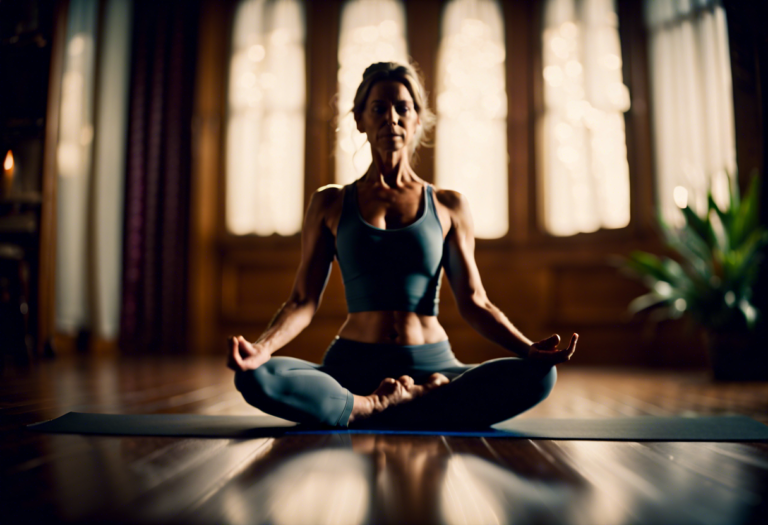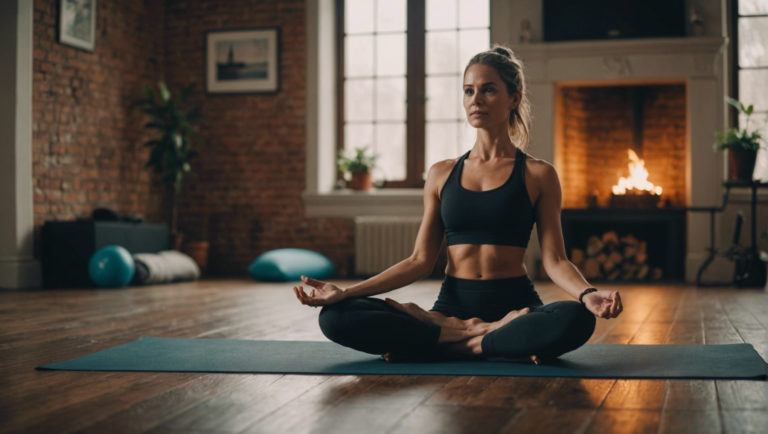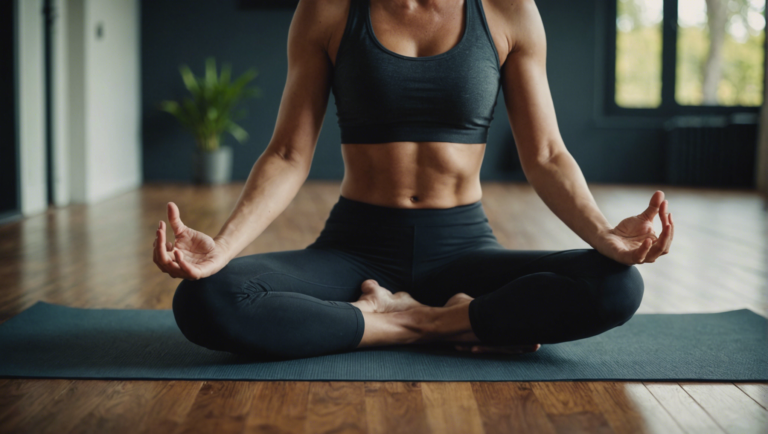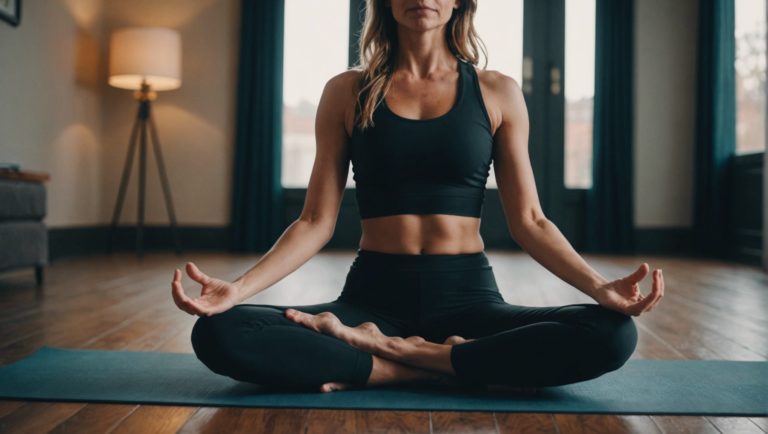Guidelines For Practicing Heated Vinyasa Yoga Safely And Effectively
Benefits of Heated Vinyasa Yoga compared to Traditional Yoga Practices
Heated Vinyasa Yoga has gained immense popularity in recent years, with many enthusiasts lauding its unique benefits compared to traditional yoga practices. The practice involves flowing through poses in a heated room, usually set between 95-100 degrees Fahrenheit. This combination of heat and dynamic movements offers a plethora of advantages that set it apart from traditional yoga.
Increased Flexibility and Range of Motion
One of the key benefits of practicing Heated Vinyasa Yoga is the increased flexibility and range of motion it offers. The heat allows for deeper stretching of the muscles, tendons, and ligaments, enabling practitioners to access poses that may be more challenging in a cooler environment. This heightened flexibility not only enhances yoga practice but also reduces the risk of injuries by ensuring proper alignment and form.
Detoxification and Cleansing
The heat in a Heated Vinyasa Yoga session induces profuse sweating, which aids in detoxification by flushing out toxins from the body. Sweating is the body’s natural way of eliminating waste and impurities, making heated yoga an effective practice for cleansing the system. This detoxification process can leave practitioners feeling rejuvenated and energized after each session.
Increased Calorie Burn
Another advantage of Heated Vinyasa Yoga is its ability to increase calorie burn compared to traditional yoga practices. The combination of dynamic movements in a heated environment ramps up the heart rate, leading to a higher calorie expenditure. This makes heated yoga a popular choice for individuals looking to enhance their weight loss efforts while reaping the holistic benefits of a yoga practice.
Enhanced Circulation and Cardiovascular Health
Practicing yoga in a heated room can also provide benefits for cardiovascular health. The heat causes blood vessels to dilate, promoting better circulation throughout the body. This increased blood flow not only delivers more oxygen and nutrients to the muscles but also supports overall heart health. Improved circulation can have a positive impact on various bodily functions, contributing to overall well-being.
Mental Clarity and Focus
The combination of heat, movement, and breathwork in Heated Vinyasa Yoga can help cultivate mental clarity and focus. The practice demands concentration and presence as practitioners flow through sequences in a challenging environment. This meditative aspect of heated yoga can help alleviate stress, improve cognitive function, and enhance mindfulness both on and off the mat.
The benefits of Heated Vinyasa Yoga compared to traditional yoga practices are vast and diverse. From increased flexibility and detoxification to enhanced calorie burn and mental focus, heated yoga offers a unique approach to holistic well-being. Whether you are a seasoned yogi or new to the practice, incorporating Heated Vinyasa Yoga into your routine can provide a transformative experience for both the body and mind.
Precautions and Safety Measures to Consider Before Practicing Heated Vinyasa Yoga
Heated Vinyasa yoga is a dynamic form of yoga that is practiced in a heated room. The high temperature in the room helps to loosen muscles, increase flexibility, and promote sweating to cleanse the body. While this type of yoga can offer many benefits, it’s essential to practice it safely by considering certain precautions and safety measures.
Importance of Consulting a Healthcare Provider
Before starting any new exercise routine, especially one as intense as Heated Vinyasa yoga, it is crucial to consult with a healthcare provider. This is particularly important if you have any pre-existing health conditions such as heart problems, high or low blood pressure, or if you are pregnant. Your healthcare provider can offer valuable advice on whether Heated Vinyasa yoga is suitable for you.
Hydration Is Key
Practicing Heated Vinyasa yoga can cause you to sweat profusely due to the high temperature of the room. Therefore, it is essential to stay hydrated before, during, and after your practice. Make sure to drink plenty of water to replenish the fluids lost through sweating. Dehydration can lead to dizziness, fatigue, and other serious health issues, so listen to your body and hydrate adequately.
Listen to Your Body
While the practice of yoga encourages you to push past your limits, it is crucial to listen to your body, especially in a heated environment. If you start to feel lightheaded, dizzy, nauseous, or experience any pain, stop immediately and rest. Pushing yourself too hard in Heated Vinyasa yoga can lead to injury, so take breaks whenever needed and honor what your body is telling you.
Proper Breathing Techniques
In Heated Vinyasa yoga, the room’s high temperature can make breathing more challenging. Focus on deep, steady breaths throughout your practice to help regulate your body temperature and oxygen flow. Proper breathing not only enhances your performance but also calms the mind and reduces stress. Remember to breathe steadily and mindfully as you move through the poses.
Mindful Warm-Up and Cool-Down
Before diving into the more intense sequences of Heated Vinyasa yoga, ensure you engage in a proper warm-up. This can include gentle stretches and movements to prepare your muscles and joints for the practice ahead. Similarly, after your practice, allow time for a cool-down period to help your body recover and prevent muscle soreness.
Proper Attire and Equipment
Wearing appropriate attire for Heated Vinyasa yoga is essential for comfort and safety. Opt for moisture-wicking clothing that allows your skin to breathe and move freely. Additionally, consider using a mat towel to absorb sweat and improve grip during poses. Proper equipment can enhance your practice and prevent slips or injuries.
Practicing Heated Vinyasa yoga can be a rewarding and invigorating experience when done safely and mindfully. By considering these precautions and safety measures, you can ensure a more enjoyable and beneficial practice while minimizing the risk of injury. Remember to consult with a healthcare provider, stay hydrated, listen to your body, focus on breathing, warm up and cool down properly, and use the right attire and equipment. Stay mindful and present in the moment as you flow through your Heated Vinyasa yoga practice.
How to Enhance Flexibility and Strength Through Heated Vinyasa Yoga
Vinyasa yoga is a dynamic form of yoga that synchronizes movement with breath to create a continuous flow from one pose to the next. When practiced in a heated room, often referred to as heated Vinyasa yoga, the combination of heat and movement can provide various benefits, including enhanced flexibility and strength. Here are some guidelines to help you practice heated Vinyasa yoga safely and effectively.
Benefits of Heated Vinyasa Yoga
Heated Vinyasa yoga offers a range of benefits, particularly when it comes to improving flexibility and strength. The heat in the room helps to warm up your muscles, allowing you to move more deeply into poses. This can lead to increased flexibility over time. Additionally, the dynamic nature of Vinyasa yoga helps to build strength as you flow through sequences that engage various muscle groups.
Stay Hydrated
Practicing heated Vinyasa yoga can cause you to sweat profusely, leading to dehydration if you’re not careful. It’s essential to drink plenty of water before, during, and after your practice to stay hydrated. Coconut water or electrolyte-rich drinks can also help replenish the minerals lost through sweating.
Listen to Your Body
While the heat can help improve flexibility, it’s crucial to listen to your body and not push yourself beyond your limits. Avoid forcing your body into a pose that feels uncomfortable or painful. Instead, focus on your breath and ease into the pose gradually. Respect your body’s boundaries and honor where you are in your practice.
Focus on Alignment
Maintaining proper alignment is key to practicing heated Vinyasa yoga safely. The heat can sometimes make you feel more flexible than you actually are, leading to potential injury if you’re not mindful of alignment. Pay attention to your positioning in each pose, engage your core muscles, and make adjustments as needed to ensure you’re practicing with proper alignment.
Breathe Mindfully
The breath is a central component of Vinyasa yoga. In a heated practice, focusing on your breath becomes even more critical as the heat can challenge your cardiovascular system. Practice deep, mindful breathing to help calm your mind, regulate your body temperature, and maintain focus throughout the practice.
Use Props
In heated Vinyasa yoga, don’t hesitate to use props like blocks, straps, or blankets to support your practice. Props can help you modify poses to suit your current level of flexibility and strength, making the practice more accessible and safe. Utilize props to enhance your alignment and deepen your practice gradually.
Cool Down Properly
After a heated Vinyasa yoga session, take the time to cool down properly. Spend a few moments in Savasana or a seated meditation to allow your body to return to its natural state. Hydrate well, stretch gently, and give yourself the opportunity to fully absorb the benefits of your practice.
Heated Vinyasa yoga can be a powerful practice for enhancing flexibility and strength when approached mindfully. By following these guidelines and listening to your body, you can safely explore the transformative effects of heated Vinyasa yoga on your physical and mental well-being. Whether you’re a seasoned yogi or new to the practice, remember to honor your body and practice with intention to reap the full benefits of this dynamic form of yoga.
Breathing Techniques and Their Importance in Heated Vinyasa Yoga
Heated Vinyasa yoga is a dynamic and energizing form of yoga that combines movement with breath. In this intense practice, the room is heated to a high temperature to promote flexibility, detoxification, and a deeper release of tension. While the physical aspect of heated Vinyasa yoga is challenging, the breath plays a crucial role in helping practitioners move through the practice safely and effectively.
Importance of Breath Awareness
In heated Vinyasa yoga, breath awareness is essential. Focusing on the breath not only helps practitioners stay present in the moment but also assists in linking movement with breath. The heat in the room can make the practice more strenuous, making it easy to lose track of breathing. By consciously connecting each movement to the breath, practitioners can ensure a steady flow of oxygen to the muscles, aiding in performance and preventing injuries.
Utilizing Ujjayi Breath
One of the key breathing techniques used in heated Vinyasa yoga is Ujjayi breath, also known as victorious breath. This audible breath involves constricting the back of the throat slightly, creating a gentle hissing sound during both inhalation and exhalation. Ujjayi breath helps regulate body temperature, builds internal heat, and focuses the mind. It also serves as a tool to pace the practice, allowing practitioners to synchronize movements with breath.
Breath Control During Challenging Poses
In heated Vinyasa yoga, practitioners often encounter challenging poses that require strength, balance, and flexibility. During these demanding postures, maintaining steady and controlled breathing is paramount. By staying calm and composed through consistent breath flow, individuals can enhance their focus, manage discomfort, and access their full potential in each pose. Conscious breathing also aids in releasing tension and promoting relaxation in strenuous positions.
Cooling Breath Techniques
While heated Vinyasa yoga generates internal heat and intensity, it is crucial to incorporate cooling breath techniques to balance the practice. Practices such as Sitali pranayama, where individuals inhale through a rolled tongue to create a cooling sensation, can help regulate body temperature and prevent overheating. Integrating cooling breaths between challenging sequences can offer a refreshing break and prevent practitioners from feeling overwhelmed by the heat.
Mind-Body Connection Through Breath
Breath serves as a bridge between the mind and body in heated Vinyasa yoga. By synchronizing movement with breath, practitioners cultivate a deeper sense of awareness and presence on the mat. Consistent and intentional breathing not only increases oxygen flow to the muscles but also calms the mind, reduces stress, and enhances the overall yoga experience. The rhythmic pattern of breath in heated Vinyasa yoga fosters a meditative state that allows individuals to let go of distractions and connect inwardly.
Breathing techniques are integral to the practice of heated Vinyasa yoga. By incorporating breath awareness, utilizing Ujjayi breath, controlling breath during challenging poses, integrating cooling breath techniques, and emphasizing the mind-body connection through breath, practitioners can elevate their practice, promote safety, and experience the full benefits of this dynamic yoga style. Embracing the power of breath in heated Vinyasa yoga not only enhances physical performance but also nurtures mental clarity, emotional balance, and spiritual growth on and off the mat.
Tips for Beginners to Improve Their Heated Vinyasa Yoga Practice
Navigating the Challenges of Heated Vinyasa Yoga as a Beginner
Understanding the Basics
As a beginner delving into the world of heated Vinyasa yoga, it’s essential to grasp the foundational elements of this dynamic practice. Vinyasa, often referred to as flow yoga, synchronizes movement with breath, creating a continuous and fluid sequence of poses. Add heat to the mix, and you have heated Vinyasa yoga, which not only promotes flexibility and strength but also helps detoxify the body.
Importance of Proper Hydration
One of the most critical aspects of practicing heated Vinyasa yoga is staying properly hydrated. The increased temperature in the room and the vigorous nature of the practice can lead to significant fluid loss through sweat. It’s recommended to drink an adequate amount of water before, during, and after your heated yoga session to maintain hydration levels and support your body’s functions.
Listening to Your Body
In the heat of the moment—literally— it can be easy to push yourself beyond your limits in heated Vinyasa yoga. However, it’s crucial to listen to your body and honor its signals. Avoid comparing yourself to others in the class and instead focus on your own practice. If a pose feels uncomfortable or painful, ease off or take a restorative posture until you feel ready to rejoin the flow.
Modifying Poses for Your Comfort
Modifying poses is not a sign of weakness but rather a way to adapt the practice to suit your body’s needs. In heated Vinyasa yoga, where the heat can intensify the challenge, don’t hesitate to use props like blocks, straps, or blankets to make poses more accessible. Working with your limitations and gradually building strength and flexibility will enhance your practice over time.
Breathing Techniques and Mindfulness
The breath is a central component of Vinyasa yoga, and in a heated environment, focusing on your breath becomes even more crucial. Practice deep, steady breathing to help regulate your body temperature and maintain mental clarity throughout the session. Cultivating mindfulness during heated Vinyasa yoga not only improves your physical practice but also supports mental focus and emotional well-being.
Finding the Right Balance
While it’s beneficial to challenge yourself in heated Vinyasa yoga, finding the right balance between effort and ease is key. Pushing too hard can lead to injury, while not engaging enough can hinder your progress. Strike a balance that allows you to explore your edge while respecting your body’s limits, ultimately fostering growth and development in your practice.
Embarking on a journey into heated Vinyasa yoga as a beginner may feel daunting, but with patience, dedication, and a mindful approach, you can enhance your practice and reap its numerous benefits. Remember to prioritize safety, listen to your body, and honor the process as you progress on your yoga path.
Conclusion
Practicing Heated Vinyasa Yoga offers a myriad of benefits that set it apart from traditional yoga practices. The combination of heat, movement, and breath in Heated Vinyasa Yoga results in increased flexibility, improved strength, detoxification, and enhanced mental focus. It provides a holistic approach to wellness that benefits the body, mind, and spirit.
Before engaging in Heated Vinyasa Yoga, it is crucial to prioritize safety by considering various precautions. It’s essential to stay hydrated, listen to your body, be mindful of any existing health conditions, and consult with a healthcare professional if needed. By taking these safety measures seriously, practitioners can minimize the risk of injuries and reap the full benefits of their practice.
In order to amplify flexibility and strength through Heated Vinyasa Yoga, consistency is key. Regular practice, combined with proper alignment and engaging in challenging poses, can help individuals progress in their practice and unlock new levels of physical capability. By embracing the heat and flow of Vinyasa, practitioners can push past their limits and achieve greater flexibility and strength over time.
Breathing techniques play a pivotal role in Heated Vinyasa Yoga, serving as a bridge between the body and mind. By synchronizing breath with movement, practitioners can cultivate a sense of mindfulness, enhance their focus, and improve their overall yoga experience. Utilizing deep, intentional breathing not only maximizes the benefits of each pose but also allows for a deeper connection to the present moment.
For beginners looking to enhance their Heated Vinyasa Yoga practice, it’s important to start slowly, focus on proper alignment, and gradually build strength and flexibility. Practitioners should not compare themselves to others and instead embrace their unique journey, allowing room for growth and improvement with each practice session. Consistency, patience, and a positive attitude are key elements to progressing in Heated Vinyasa Yoga.
Heated Vinyasa Yoga presents a dynamic and invigorating approach to traditional yoga practices. By understanding the benefits, prioritizing safety measures, focusing on flexibility and strength, mastering breathing techniques, and incorporating tips for beginners, individuals can embark on a transformative yoga journey that nurtures both the body and mind. Embrace the heat, flow with the breath, and unlock the full potential of your Heated Vinyasa Yoga practice.



